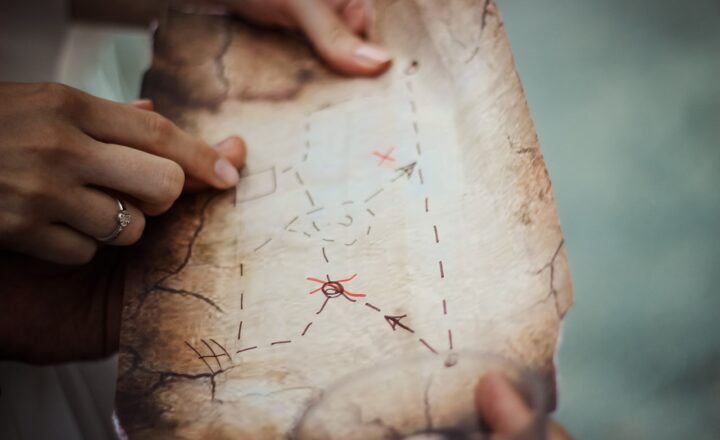The Secrets of the Shroud of Turin: Could It Really Be a Divine Relic?
November 12, 2024

The Shroud of Turin has captivated the attention and imagination of millions around the world for centuries. Known as a piece of linen bearing the image of a man who appears to have been crucified, this relic is steeped in mystery and controversy. Is it genuine or a medieval forgery? What secrets lie within its folds? In this article, we will delve into the history, science, and religious significance of the Shroud of Turin to examine whether it could truly be a divine relic.
1. The History of the Shroud
The Shroud of Turin first surfaced in recorded history in the 14th century, in France, where it was displayed as an object of veneration. According to historical accounts, the shroud disappeared for several decades before it reappeared, this time in the possession of a noble family in France. The cloth became highly sought-after, attracting attention from pilgrims and researchers alike.
Legend has it that the Shroud was once in the possession of a Christian knight who uncovered it during the Crusades. It was believed to have belonged to Jesus Christ and displayed the miraculous imprint of his body after his resurrection. Commentary about the Shroud filled the pages of history, with each mentioning lending support to its authenticity as a sacred artifact.
However, the provenance of the Shroud has been challenged over time. In 1988, carbon dating tests were performed, suggesting that the cloth originated from the 13th to 14th century. Critics of these findings argue that the tests may have been flawed due to contamination, leading many to cling to the belief that the Shroud is of significant religious importance and possibly the actual burial cloth of Christ.
2. The Science Behind the Shroud
Modern science has turned its gaze upon the Shroud of Turin in hopes of unraveling its mysteries. The most notable of these efforts includes photographic analysis and chemical testing.
Photographs taken of the Shroud reveal an incredibly detailed image of a man, measuring approximately 14 feet long and 3.5 feet wide. This extraordinary depiction comprises metallic particles, bloodstains, and bodily fluids that indicate severe trauma consistent with crucifixion.
Moreover, a study conducted in 2005 utilized highly advanced imaging techniques, including ultraviolet fluorescence and multi-spectral analysis. The findings corroborated the presence of pigments and possible traces of body fluids not recognizable through the naked eye, posing further questions about the Shroud’s fabrication techniques.
Latest theories suggest that the image may have formed through a form of natural radiation or possibly pyrolysis, yet no conclusive evidence has emerged to validate these claims completely. Reconciling the scientific findings with the religious narratives has proven challenging, as both sides maintain fervent beliefs in the Shroud’s significance.
3. Theological Perspectives and Interpretations
For many, the Shroud of Turin is not merely a historical or scientific curiosity but a vital component of their faith. Its existence offers a physical connection to an event that forms the cornerstone of Christianity: the death and resurrection of Jesus Christ.
The image on the Shroud is believed by many to offer insight into the suffering and sacrificial love demonstrated by Christ on the cross. Church teachings around Holy Relics suggest that possessing an item associated with a saint or with Christ himself can provide spiritual benefits, leading numerous pilgrims to visit Turin, Italy, where the Shroud is housed.
Even skeptics of the Shroud’s authenticity may find profound symbolism in it. The image offers a reflection on human suffering and redemption, themes that resonate deeply within various faiths and philosophies. Its very existence prompts discussions on faith, belief, and evidence, inspiring introspection among followers and non-followers alike.
4. Modern Fascination and the Future of the Shroud
Even in contemporary times, the Shroud of Turin continues to generate dialogue across various fields: religious, scientific, and sociological. With each new generation, interest in the Shroud seems to grow, fueled by developments in technology that allow deeper examinations.
There have been recent calls for further testing strategies, along with explorations into the development of advanced imaging technologies, which may help explain how the image was formed. As science grapples with this enigmatic artifact, the Shroud has found a place in popular culture, inspiring movies, documentaries, and public debates.
As the Shroud enters an era of renewed exploration, its role as both a relic and a symbol of hope endures. For believers, it remains a testament to divine intervention; for skeptics, a remarkable riddle that challenges our understanding of faith and science.
5. Conclusion: The Shroud’s Legacy
The Shroud of Turin embodies a complex synthesis of history, faith, and science. Whether or not it is indeed the burial cloth of Christ remains a subject of intense debate. However, its impact is unequivocal; the Shroud represents interconnected human experiences of pain, love, and redemption—a universal narrative that transcends time, geography, and belief.
As we stand at the crossroads of scientific inquiry and theological exploration, the Shroud serves as a mirror reflecting profound truths about humanity’s yearning for meaning and connection to the divine. Whether viewed as a relic of history or a divine artifact, its secrets continue to inspire and provoke thought, making the Shroud of Turin an enduring icon of faith and human experience.







